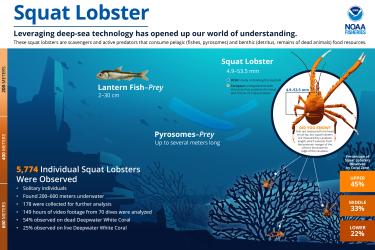The National Standards are principles that must be followed in any fishery management plan to ensure sustainable and responsible fishery management. As mandated by the Magnuson-Stevens Fishery Conservation and Management Act, NOAA Fisheries has developed guidelines for each National Standard. When reviewing fishery management plans, plan amendments, and regulations, the Secretary of Commerce must ensure that they are consistent with the National Standard guidelines.
National Standards – General
National Standard 1 – Optimum Yield
Conservation and management measures shall prevent overfishing while achieving, on a continuing basis, the optimum yield from each fishery for the United States fishing industry.
National Standard 2 – Scientific Information
Conservation and management measures shall be based upon the best scientific information available.
National Standard 3 – Management Units
To the extent practicable, an individual stock of fish shall be managed as a unit throughout its range, and interrelated stocks of fish shall be managed as a unit or in close coordination.
National Standard 4 – Allocations
Conservation and management measures shall not discriminate between residents of different states. If it becomes necessary to allocate or assign fishing privileges among various United States fishermen, such allocation shall be (a) fair and equitable to all such fishermen; (b) reasonably calculated to promote conservation; and (c) carried out in such manner that no particular individual, corporation, or other entity acquires an excessive share of such privilege.
-
Related resources:
- Review of Laws, Guidance, Technical Memorandums and Case Studies Related to Fisheries Allocation (Morrison & Scott, 2014)
- Marine Fishery Allocation Issues Report (Lapointe, 2012)
- Allocation of Fishery Harvests under the Magnuson-Stevens Fishery Conservation and Management Act – Principles and Practice (Plummer et al., 2012)
National Standard 5 – Efficiency
Conservation and management measures shall, where practicable, consider efficiency in the utilization of fishery resources; except that no such measure shall have economic allocation as its sole purpose.
National Standard 6 – Variations and Contingencies
Conservation and management measures shall take into account and allow for variations among, and contingencies in, fisheries, fishery resources, and catches.
National Standard 7 – Costs and Benefits
Conservation and management measures shall, where practicable, minimize costs and avoid unnecessary duplication.
National Standard 8 – Communities
Conservation and management measures shall, consistent with the conservation requirements of this Act (including the prevention of overfishing and rebuilding of overfished stocks), take into account the importance of fishery resources to fishing communities by utilizing economic and social data that meet the requirement of paragraph (2) [i.e., National Standard 2], in order to (a) provide for the sustained participation of such communities, and (b) to the extent practicable, minimize adverse economic impacts on such communities.
National Standard 9 – Bycatch
Conservation and management measures shall, to the extent practicable, (a) minimize bycatch and (b) to the extent bycatch cannot be avoided, minimize the mortality of such bycatch.
National Standard 10 – Safety of Life at Sea
Conservation and management measures shall, to the extent practicable, promote the safety of human life at sea.
